Historical details
The earliest extant music manuscripts written in German tablature date from the first half of the 15th century, with the oldest example, a German manuscript dating from 1432, containing the earliest known setting of a partial organ mass as well as a piece based on a cantus firmus. These manuscripts used letters (the same as today) to identify pitch, with the upper voice typically written on a staff in mensural notation. This style was also present in other German-speaking areas, such as Austria. These manuscripts contain valuable information as to the evolution of the music from the period, with extensive evidence of the influence of vocal, and later dance music, on early instrumental music. This practice which could still be seen in collections from the 16th century eventually led to the full-fledged Baroque dance suites of later centuries. This hybrid tablature was also featured in some early printed music books, such as Arnolt Schlick’s Tabulaturen etlicher Lobgesang und Lidlein of 1512.
Later notation that included the upper voice in letters as well became prevalent in the latter part of the 16th century. Even works published in open score, such as Samuel Scheidt's Tablatura Nova (1624), may have been influenced by the strict vertical alignment of so-called "new German organ tablature". Remaining in use in Germany (and neighboring areas, such as modern-day Hungary or Poland ) through the time of Bach, the music of some composers of the period remains available only in manuscript tablature format. The last use of this style of notation is in Johann Samuel Petri’s Anleitung zur praktischen Musik (1782). [15]
In France, England and Italy, staff notation was the norm, and while there are isolated examples of tablature from England (the 14c Robertsbridge codex), there is no evidence that such use was as widespread as in Germany.

A clef is a musical symbol used to indicate which notes are represented by the lines and spaces on a musical staff. Placing a clef on a staff assigns a particular pitch to one of the five lines or four spaces, which defines the pitches on the remaining lines and spaces.
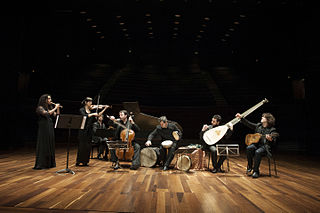
Historically informed performance is an approach to the performance of classical music, which aims to be faithful to the approach, manner and style of the musical era in which a work was originally conceived.
Pérotin was a composer associated with the Notre Dame school of polyphony in Paris and the broader ars antiqua musical style of high medieval music. He is credited with developing the polyphonic practices of his predecessor Léonin, with the introduction of three and four-part harmonies.
Sonata da chiesa is a 17th-century genre of musical composition for one or more melody instruments and is regarded an antecedent of later forms of 18th century instrumental music. It generally comprises four movements, typically a largo prelude followed by a fugal allegro, an expressive slow movement, and an allegro finale, although there are also many variations of this pattern.

Ars antiqua, also called ars veterum or ars vetus, is a term used by modern scholars to refer to the Medieval music of Europe during the High Middle Ages, between approximately 1170 and 1310. This covers the period of the Notre-Dame school of polyphony, and the subsequent years which saw the early development of the motet, a highly varied choral musical composition. Usually the term ars antiqua is restricted to sacred (church) or polyphonic music, excluding the secular (non-religious) monophonic songs of the troubadours, and trouvères. Although colloquially the term ars antiqua is used more loosely to mean all European music of the 13th century, and from slightly before.

Organ tablature is a form of musical notation used by the north German Baroque organ school, although there are also forms of organ tablature from other countries such as Italy, Spain, Poland, and England. Portions of Johann Sebastian Bach's Orgelbüchlein are written in tablature, as are a great deal of the surviving manuscripts of the organ works of Dieterich Buxtehude and other north German organ composers of the Baroque era.
Antonín (Anthony) Kammel was a Bohemian composer and violinist of the Classical period. He is known for his instrumental works composed primarily for strings, though he did compose a few sinfonias and divertimentos that included wind instruments. His music incorporates many features of other Classical period works as well as elements reminiscent of Czech folk music.
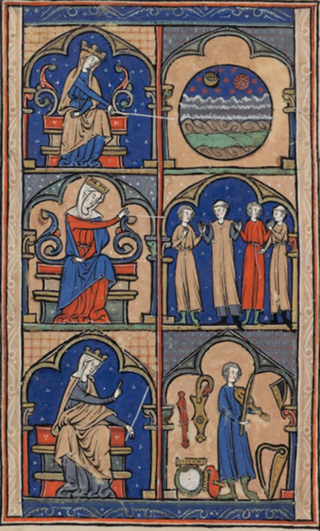
The Magnus Liber or Magnus liber organi, written in Latin, is a repertory of medieval music known as organum. This collection of organum survives today in three major manuscripts. This repertoire was in use by the Notre-Dame school composers working in Paris around the end of the twelfth and beginning of the thirteenth centuries, though it is well agreed upon by scholars that Leonin contributed a bulk of the organum in the repertoire. This large body of repertoire is known from references to a "magnum volumen" by Johannes de Garlandia and to a "Magnus liber organi de graduali et antiphonario pro servitio divino" by the English music theorist known as Anonymous IV. Today it is known only from later manuscripts containing compositions named in Anonymous IV's description. The Magnus Liber is regarded as one of the earliest collections of polyphony.
Willi Apel was a German-American musicologist and noted author of a number of books devoted to music. Among his most important publications are the 1944 edition of The Harvard Dictionary of Music and French Secular Music of the Late Fourteenth Century.
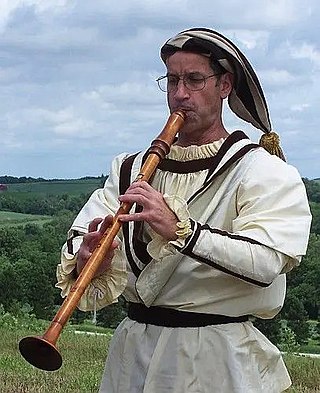
The Hirtenschalmei is a double reeded woodwind instrument, with a cylindrical bore and a flared bell, reconstructed based on iconographic sources in the late 20th century. The instrument is described as producing a "buzzy" sound. The Hirtenschalmei tends to be quieter than a shawm. The double reed in the instrument is capped. The instrument is often mentioned in medieval french literature and art, depicted as being played by rustic figures.

The Symphony No. 26 in D minor, Hoboken 1/26, is one of the early Sturm und Drang Symphonies written by Joseph Haydn. It is popularly known as the Lamentatione. It was written under the auspices of Prince Nikolaus Esterházy, and is from the late 1760s, when Haydn began to experiment with minor key symphonic writing. It is also one of his first minor key symphonies.
Fernando Valenti was an American harpsichordist. After studying with José Iturbi and Ralph Kirkpatrick and débuting in 1950, he recorded extensively, especially in the 1950s, and taught for forty years until his death. One of his most-noted students was Igor Kipnis. His recordings of Bach and Scarlatti were highly regarded, and he was regularly mentioned in the pages of National Review by William F. Buckley Jr. In one of the odder musical pairings of the 1960s, Valenti was on the same bill as Jimi Hendrix on Thanksgiving night, November 28, 1968, at New York's historic Philharmonic Hall.
Polish organ tablatures include some of the earliest and most important tablature sources of instrumental music in Europe. Particularly well-known is the Jan z Lublina tablature, which dates from mid-16th century and contains some 250 pieces. Most Polish organ tablatures use the German form of notation. The genres vary from all kinds of liturgical music to dances and vocal intabulations. This article presents a partial list of Polish organ tablatures, in chronological order.

The Well-Tempered Clavier, BWV 846–893, consists of two sets of preludes and fugues in all 24 major and minor keys for keyboard by Johann Sebastian Bach. In the composer's time, clavier referred to a variety of stringed keyboard instruments, most typically the harpsichord or clavichord, but not excluding the organ, although it is not a stringed keyboard.
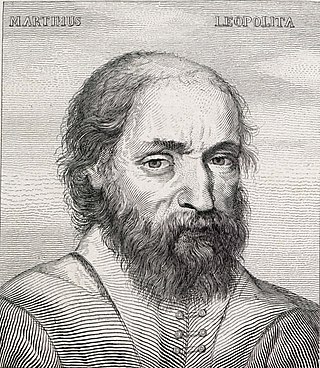
Marcin Leopolita was one of the most eminent Polish composers of the 16th century. He attended the Jagiellonian University and may have studied under the Polish composer Sebastian z Felsztyna and Jan Jelen of Tuchola.
Missa Cuiusvis Toni is a four-part musical setting of the Ordinary of the Mass by the 15th-century composer Johannes Ockeghem. It is found in late-century manuscripts, including the Chigi codex, and was published in 1539, 42 years after the composer's death in 1497.

BWV Anh., abbreviation of Bach-Werke-Verzeichnis Anhang, is a list of lost, doubtful, and spurious compositions by, or once attributed to, Johann Sebastian Bach.
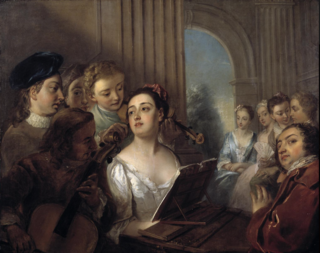
Realization is the art of creating music, typically an accompaniment, from a figured bass, whether by improvisation in real time, or as a detained exercise in writing. It is most commonly associated with Baroque music.

The American Institute of Musicology (AIM) is a musicological organization that researches, promotes and produces publications on early music. Founded in 1944 by Armen Carapetyan, the AIM's chief objective is the publication of modern editions of medieval, Renaissance and early Baroque compositions and works of music theory. The breadth and quality of publications produced by the AIM constitutes a central contribution to the study, practice and performance of early music.

Jeffery T. Kite-Powell is an American musicologist and Professor Emeritus at the Florida State University College of Music where he was active from 1984 to 2013. During his tenure at FSU, he was Coordinator of the Music History and Musicology Division from 1996 to 2008. He also directed The Florida State University Early Music Ensembles and in 1989 he founded the vocal group Cantores Musicæ Antiquæ. Kite-Powell's primary focuses are the music of the Renaissance and early Baroque periods, organ tablature, historical performance practice, and Michael Praetorius.













